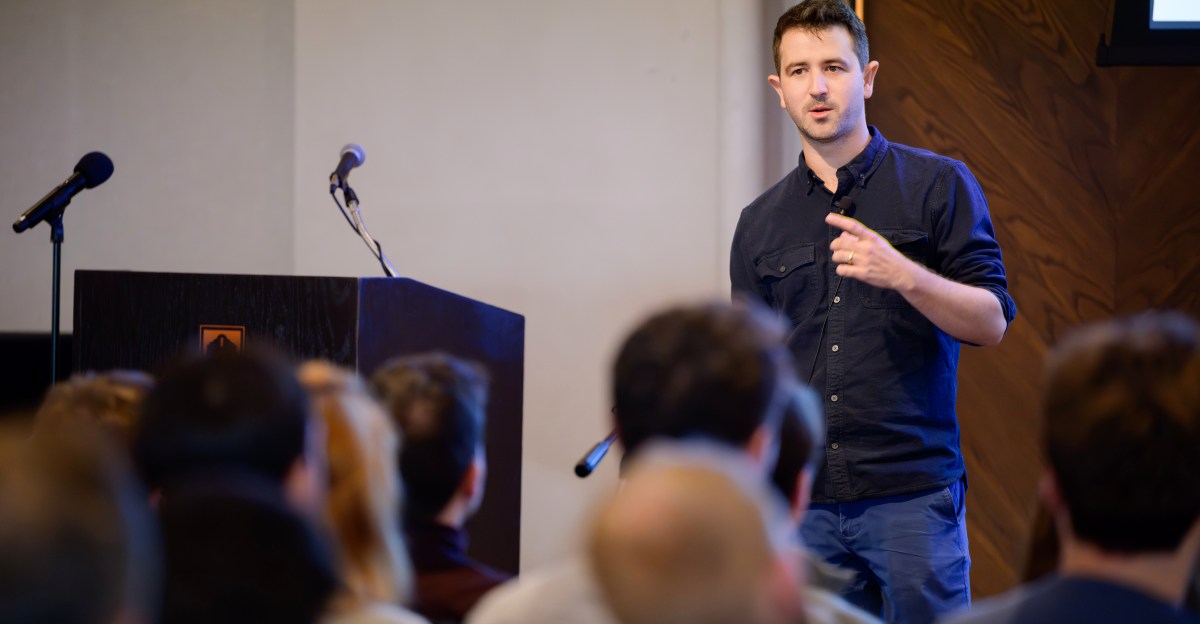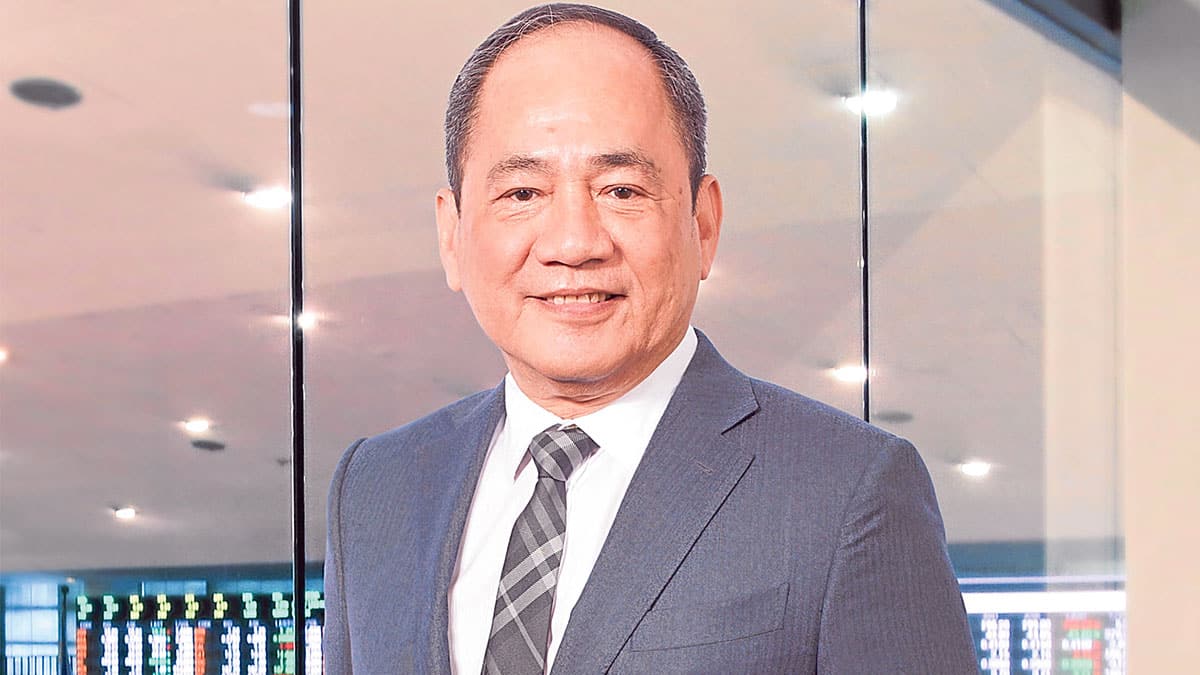Over the past decade, Open Philanthropy has been the rare philanthropic shop with both the resources and the rigor to make a dent in some of the world’s biggest problems. Working closely with Good Ventures the charity built by Facebook and Asana co-founder Dustin Moskovitz and his wife Cari Tuna Open Philanthropy has directed more than $4 billion since 2014 across a wide portfolio, from global health to housing to frontier science. Its money has backed philanthropic efforts estimated to have saved 100, 000 lives, helped catalyze the YIMBY movement in California, fought to improve conditions for billions of farmed animals, and supported research that went on to win a Nobel Prize. Future Perfect Explore the big, complicated problems the world faces and the most efficient ways to solve them. Sent twice a week. Email (required) By submitting your email, you agree to our Terms and Privacy Notice. This site is protected by reCAPTCHA and the Google Privacy Policy and Terms of Service apply. Whatever you think about “effective” giving as a label or effective altruism, the movement that Open Philanthropy is inescapably associated with this is one of the clearest experiments we have in what analytically minded, effectiveness-obsessed philanthropy can do at scale. Now, as it enters its second decade, Open Philanthropy is changing its name and changing some of what it does. It will now call itself Coefficient Giving, a rebrand meant to signal that the organization is moving from primarily serving one anchor donor Moskovitz and Tuna to advising and deploying capital for many. In practical terms, that means converting internal programs into multi-donor funds that other philanthropists can join among them the $125 million Lead Exposure Action Fund and the $120 million Abundance and Growth Fund while continuing core work in areas that benefit global health and development. The group says it directed more than $100 million from donors beyond Good Ventures in 2024, and has already more than doubled that number in 2025. But the mission, they emphasize, remains the same: maximize impact for every dollar given. Why “coefficient”? As CEO, Alexander Berger, puts it in my conversation with him, “coefficient is a multiplier”: the “co-” nods to collaboration with other givers; the “efficient” is a reminder of the north star of effectiveness. Berger, who has helped steer the organization through years of bets on global health, AI risk, and “abundance and growth,” is a pragmatic optimist. In the conversation that follows, we dig into what the name change means in practice: how pooled funds will make decisions, how they’re weighing AI and near-term global health, and where philanthropy’s comparative advantage really lies in a world of volatile public budgets and accelerating technology. Consider this a map to Open Philanthropy’s sorry, Coefficient Giving’s second act, and a test of whether the multiplier effect can deliver more impact, faster. This conversation has been lightly edited for clarity. You’ve said the last two years marked a significant shift, moving from a single anchor funder toward partnering with other donors. And now you’re rebranding. What problem didn’t the old setup solve, and what will feel different with the new name and approach? There’s not a problem that it’s trying to solve it’s really about sort of delivering on the original goal that we launched Open Philanthropy with way back in the day. The ambition was to sort of be a resource for other people who would come along, who would be in Cari and Dustin’s shoes, sort of asking that question: Where can I give my resources in a way that it’s going to have the most impact for other people? We basically spent our first decade trying to build up to the point where we were sort of on track to hit Cari and Dustin’s goals of giving away their resources in their lifetime. We’re sort of within striking distance of that now. And over the last couple of years, we’ve started to pivot to invest in that original ambition of being a resource to others. And the new name why Coefficient Giving? We weren’t sure if we were going to change the name. When we came across “coefficient,” we were just like, oh, that’s really good. That might be it. Because the “co” signals interest in collaboration and working with others. “Efficient” is a nod to the focus that we’ve always had on cost-effectiveness. And together, a “coefficient” is a multiplier. And so we think that speaks to our focus on ROI [return on investment] and being able to help multiply the impact of others. Many organizations have “open” in the name without actually being all that open. But Open Philanthropy was known for its transparency and publishing detailed explanations of the reasoning behind its funding including when things didn’t go well. Will that continue under Coefficient? We don’t see this as a change in terms of our level of openness relative to the status quo. But there were a lot of other organizations that had “open” in the name, and you would be surprised by how often we got confused with them. Writing about our reasoning, sharing our worldview, and the sort of big mistakes that we’ve made or places where we think we could have done something better to have more impact, is a big part of how we show up. When we came across “coefficient,” we were just like, oh, that’s really good. That might be it. Because the “co” signals interest in collaboration and working with others. “Efficient” is a nod to the focus that we’ve always had on cost-effectiveness. And together, a “coefficient” is a multiplier. But also, honestly, that’s evolved over time. In our earliest days, we would write these long posts about every grant that we made, and that just didn’t scale with the organization. We’re different from GiveWell GiveWell’s model is that they’re really trying to explain all of their reasoning in public because they’re trying to sell their recommendations to retail donors. We work with people whom we can and do talk to, mostly offline. We’re not trying to make literally everything available on the website in the same way, and we haven’t been for a long time. It’s a strange moment: public-health budgets slashed and turmoil around USAID. Meanwhile, private tech wealth is surging and AI is accelerating. What’s the job only philanthropy can do and how does that shape your second decade? The number one framework that we use for picking what causes to work on is the importance, tractability, neglectedness framework. But another way is to ask: Where is there a good argument for philanthropy as opposed to the state or the private sector to intervene? Often, we think of that being a place where there’s a structural imbalance in power or resources, and someone’s interests are structurally not represented. For example, a lot of our giving goes to develop new medical technologies for some of the world’s poorest people who are suffering from diseases that just aren’t a problem in the rich world. The market incentive really isn’t there. And so that’s a place where we see a strong case for philanthropic subsidy. I think that’s true of a lot of our more abundance-oriented work, such as enabling more housing to get built in the most productive places. The benefits flow to the potential people who might move in the future, but they don’t get to vote for those policies because they’re not there yet. One important part of the answer is that most people most high-income Americans should be giving a lot more. The average American gives something like 2 percent of their income to charity. The pie of charitable dollars just could be bigger because there are so many good things to do and so many ways to be helpful in the world. When it comes to replacing government dollars, the NIH [National Institutes of Health] is such an overwhelming and powerful funder of scientific research. USAID is so large compared to even the biggest foundations. We are looking and have been doing active funding to fill specific gaps in some places where public funding has pulled back, even though, of course, it’s really regretful that we’re now in this world where the funding that used to be there isn’t anymore. Over time, are there more things that we could do to try to get more leverage and try to have public policies that are more supportive of some of these good things? That’s a longer slog. You’ve funded longer-run bets like AI safety, and you also fund near-term, high-confidence lifesaving work in global health. What’s the positive case that attention to AI doesn’t crowd out global health and poverty? Those are some of the toughest questions that we face. One important part of the answer is that most people most high-income Americans should be giving a lot more. The average American gives something like 2 percent of their income to charity. The pie of charitable dollars just could be bigger because there are so many good things to do and so many ways to be helpful in the world. At the same time, there’s a budget. Those trade-offs are really hard for us. One of the reasons why we’re excited to be rebranding as Coefficient Giving and doubling down on work with other donors is because we think we shouldn’t have to make the trade-offs alone. We’ve found a lot of appetite from others to get engaged in some of these causes. Being able to connect people with high-impact opportunities or some of these funds that we’ve developed has been a way to help relieve that sort of zero-sum issue. As you convert in-house programs into multi-donor funds the lead exposure fund, the abundance and growth fund what happens if donors disagree? Who decides? So far for the pooled funds, the answer has been that basically people are giving money to Coefficient Giving to allocate within that area based on what we see fit. And actually, a couple of our external partners have given us a push to say, “don’t let people have too much governance control. I want to make sure that you’re able to fund the things that seem best.’” So we’ve been really lucky so far to find partners who didn’t want to sign up for every cause that Coefficient works on, but they do agree and are excited about some specific area like lead or like abundance. There’s a group of core donors who are coming together to help start something together or make it multi-donor. And then other folks come in because they’re interested in the space but not able to give at the anchor level. Over time, I’d be excited to eventually have other partners on an industrial scale and to think about whether those kinds of people eventually become board members or something. But that would be down the line. The federal posture on AI in the Trump administration looks more accelerationist today than in 2023. You’ve funded AI safety and governance for years. Where’s your point of leverage in this environment, and what would count as progress in the next year or so? We’ve been investing in this space for a long time. Going back to 2015, we helped build up the space of academic and think tank research on AI risks and safety. We were quite prescient there, but I think we generally don’t see ourselves as trying to achieve some specific policy goal in the next 12 to 18 months. We want people across the spectrum to be paying attention to these risks and taking them seriously, and thinking about how we can mitigate these risks while capturing some of the potentially enormous upsides. When we look at some of the things that have come out of the administration, like the AI action plan, we actually see a lot of areas for agreement or potential agreements. Our hope is that there will be ongoing space for bi-partisanship. We’re in this for the long haul. We expect to continue to help build up this ecosystem, ideally in a bipartisan and non-partisan way for the decade to come, as opposed to really thinking about it as some big push or policy agenda in the short term. You’ve supported abundance-oriented policy and housing reform for years. What does “it’s working” look like in those areas? We’ve been funding the abundance and growth movement for about 10 years. One of the lessons there is that you really can’t evaluate it on too short of a timeline. For instance, California YIMBY, which this legislative session helped pass California’s SB 79 to make it a lot easier to build multi-family housing near transit, that bill has failed two or three times going back to, I think, 2018. If five years into our funding you had looked around and said, “What have you achieved, how many units have been built?” I don’t know that you would have been able to point to very much. But it’s remarkable how much this movement has grown, how much policy influence it’s had, how much it’s shaping the conversation. That importance, neglectedness, and tractability framework has always been your north star. After a decade of giving, has it gotten harder to find causes that fit those criteria? Has your weighting of those criteria changed? I don’t particularly think so. When we started off, we were looking for those causes that were important, tractable, and neglected, but we were really, really uncertain about how to weigh those different criteria against each other. Over time, one of the big lessons was to actually downweight perceived tractability and upweight importance and neglectedness. If you think about the importance of different health problems or different diseases, it just varies by so many orders of magnitude. Neglectedness varies by hundreds of times, thousands of times. And tractability is much harder to measure. Over time, we’ve been impressed with the returns in the causes that we picked for seeming extremely important and extremely neglected. The things that seemed tractable or maybe we were pushing on an open door often we were wrong, or the tractability environment would shift. Our aim and so far we’ve seen some success is being a resource to people who have never heard of effective altruism or are not interested in it or don’t find it very motivating or welcoming. And I think that’s good. Your ability to predict tractability is so much lower. I hope that we’ll prioritize continuing to double down on some of our existing causes that we think are really important, and continuing to look for ones that are really neglected and could be an outlier. From the outside, Open Philanthropy was often treated as synonymous with effective altruism probably more than was warranted. How do you see that relationship going forward? “Synonymous” always would have given us heartburn. Our mission is to help others as much as we can with the resources available to us, and we bring a really analytical lens to that question. That’s a commonality with effective altruism. But I do think effective altruism as a community isn’t necessarily something that is very appealing to everybody. We don’t want to be only appealing to the subset of people who happen to be interested in effective altruism. Our aim and so far we’ve seen some success is being a resource to people who have never heard of effective altruism or are not interested in it or don’t find it very motivating or welcoming. And I think that’s good. You’ve talked about being open to failure in pursuit of outsized impact something philanthropy talks about more than it practices. Where has risk tolerance mattered most? There’s a lot of rhetoric in philanthropy about being open to failure and taking risks and pursuing high-risk, high-return opportunities. It can be really hard, within the confines of most organizations, to actually make those bets and see them fail and then iterate. But we have felt like the returns to being able to take those risks have been really high. I don’t think we would have been able to fund a lot of the scientific research that we funded over the last decade without accepting that most of it isn’t going to end up having a big humanitarian impact. We’ve been funding David Baker at the University of Washington for a long time, on applying AI and ML to design proteins and he won the Nobel Prize along with the Google DeepMind leaders in chemistry last year. Now we’re funding a lot of folks in protein design to apply some of those new design tools to developing vaccines for a bunch of neglected diseases. We’re seeing some of that in AI safety as well-early investments in field-building. When I started, I kind of had an idea of, you either want to be in the maximally high-risk space or in the GiveWell space. But I think over time we’ve seen a lot of success in the middle space, where you’re making progress on something important on a reasonable guess. It’s not the craziest, highest-risk thing, but it’s also not as straightforward. Our current view is that you can really do effective philanthropy, and the returns can look similar in some ways across that risk spectrum.
https://www.vox.com/future-perfect/469038/open-philanthropy-alexander-berger-coeffective-giving-effective-altruism
One of the world’s most influential charities is changing its name. Here’s why it matters.



